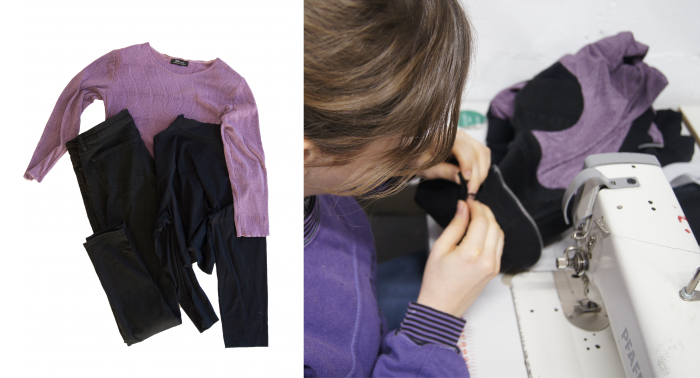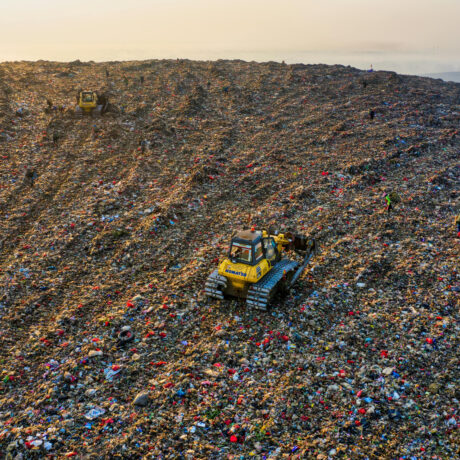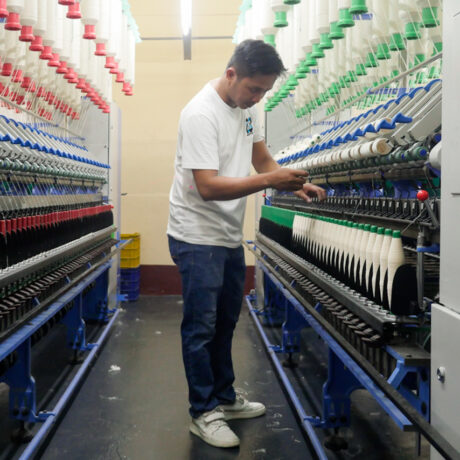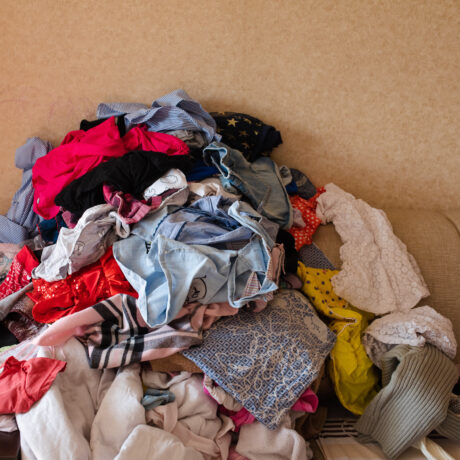The craft of repurposing waste
In our deep dive on waste, we speak to Julie Chaussende, one third of JOA, the London upcycling trio making versatile jackets from clothing waste. As we consider the magnitude of the textile waste issue, JOA highlights how innovative pattern cutting, patchworking and deconstruction offer solutions to turn discarded clothes into new designs.
You know what they say about climate change? It’s caused by developed countries, but then mostly affects people that had nothing to do with it (Environmental Audit Committee, 2019). When it comes to fashion waste, this is no different.
Our fashion consumption rate is out of control, especially in the UK, where we consume more than anywhere else in Europe, and can’t keep going this way. Indeed, most (fast) fashion items are a) discarded earlier than needed, b) not currently recyclable. According to Oxfam, after they have been donated charity shops, 70 percent of those clothes end up in African countries like Kenya, Rwanda, Ghana, and others, leaving little room for a local clothing industry to develop. And when local markets are infiltrated with fashion waste, the local culture and craft suffers. In many cultures, textiles are a highly valued heritage; from storytelling by the Incas of their ancestors in Peru (Cartwright, 2015), to demonstrating familial belonging in the South West of France (Tissage Moutet, 2019). Almost anywhere in the world, textile crafts connect us to our past and our future. In a globalised world, we must keep those cultures alive, and encourage diversity. When refusing to accept more garments coming from the West, Rwanda understandably talks about reinstating its ‘dignity’ (De Freytas-Tamura, 2017). It is time we take responsibility for the waste we created, instead of putting this burden on people that never asked for it.
So, what does this mean for a fashion designer? For starters, we must change our creative process, and be inspired by the textile waste around us. And it’s okay not to succeed after the first trial; try again, and again, and again. Upcycling is a starting point but it’s only the beginning of reusing waste, and it is up to you, and all of us, to create new ways of repurposing garments accumulated over these past decades. If you have clothes that you don’t wear anymore, why not use them as prototypes? Olivia, Anna and myself (aka JOA) de-construct garments, cut them, and rework the flat material through patchworking into jackets. Out of the off-cuts, we make little pouches, or patchwork them into tote bags and shopping bags. When taking a garment apart, we try to keep what makes it unique, but also reuse what is already in the garment in a different place. For example, the waistband of a pair of trousers can be reused to make the collar of one of our bombers. This way, we create jackets that are unique while saving resources. We also developed what we call the Sentimental Service: we repurpose garments that are sitting in people’s wardrobe unworn, but hold too much sentimental value for people to let go of. Perhaps belonging to the owner, or a loved one, for an even more personalised and emotionally-driven experience. We are passionate about people and love creating products that reflect this individuality.

And this inspires beyond design, to always think holistically and ask ourselves; how do I tell my story? How can my creativity benefit people and planet around me, but also far away? As designers, we get to pick the people we want to team up with, to create a solidarity system around clothing, and change the industry’s hierarchical environment, to instead encourage collaboration and social change. As designers, we get to choose to be local and circular, while remaining connected and open at the global level. And who knows, someday repurposing might become a new recognised form of craftsmanship and cultural heritage.








